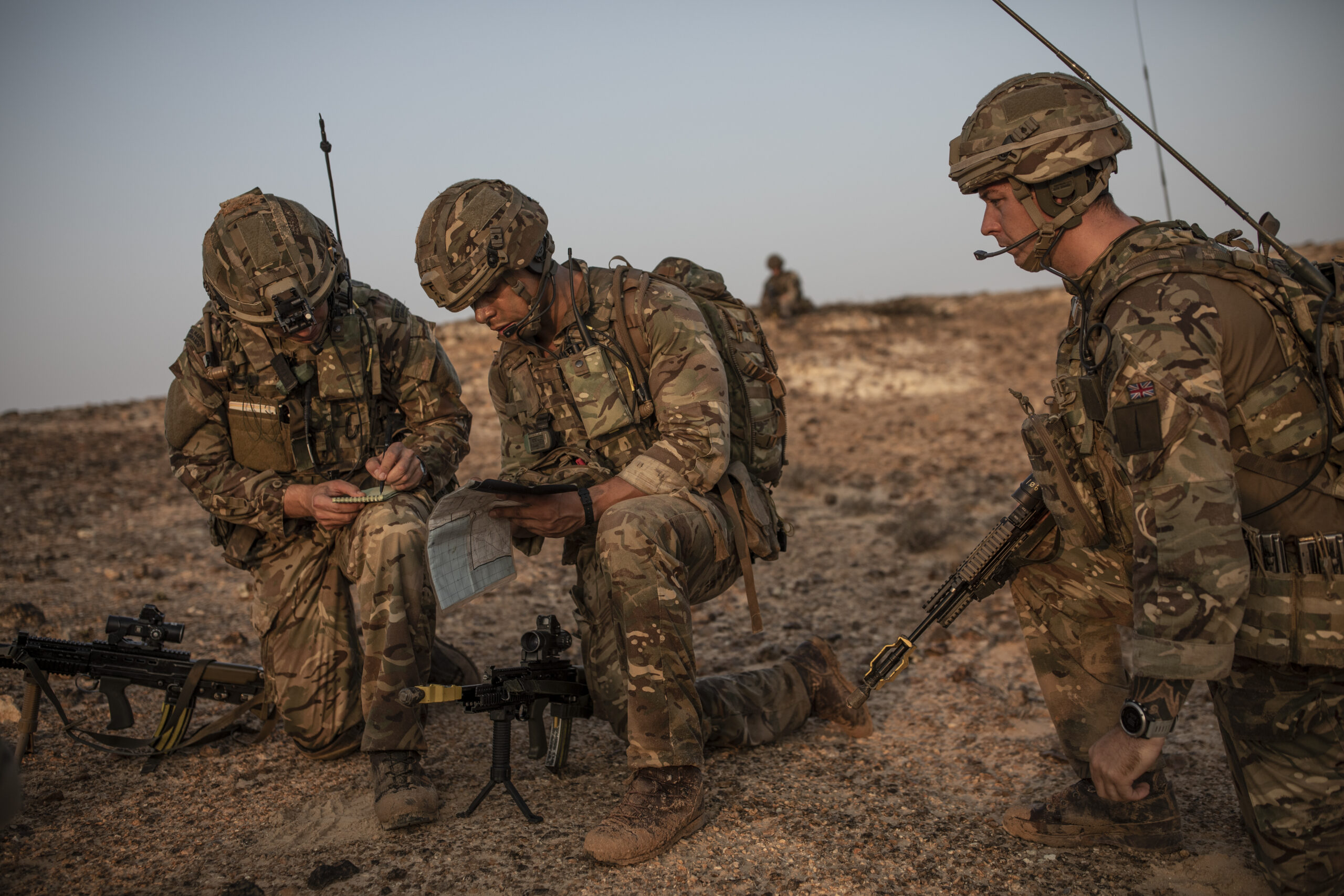ANDREW WHITE

LONDON: Gen. Sir Patrick Sanders, the head of the UK’s Strategic Command (STRATCOM), is demanding that Her Majesty’s Armed Forces become “more adept” at operating with agility throughout the gray zone of the modern battlespace.
Addressing delegates at DSEI in London on Sept. 14, Sanders warned that unlike the UK, the People’s Liberation Army and Russian Armed Forces are preparing to “win without fighting” around the world.
“Welcome to the so-called Gray Zone, where information age technology is allied to winning operational concepts,” Sanders said. “This is nothing less than a race for advantage in the defining technology of the future.”
Warning that great power conflict is not inevitable, Sanders continued: “The [UK MoD’s] Integrated Operating Concept is the source code of how to operate and fight, as [an] integrated whole across all domains.”
Specifically, he said, Multi-Domain Integration (MDI) has emerged as a critical solution for STRATCOM as it seeks to counter threats associated with great power competitors, particularly in the gray zone.
According to STRATCOM doctrine, MDI will ensure “every part of defence can work seamlessly together and with government departments and Britain’s allies, to deliver a desired outcome.” It echoes a core part of the Pentagon’s All Domain Operations concept — that stovepipes need to be broken in the modern military.
“Now, we can respond to these steps at a national level by being more strategic or assertive by mobilizing and widening our reach to bridging those domains, working with industry, academia and civil society, and of course, internationally with our allies. This is much more than buying software,” he continued.
Sanders also warned against an “avid focus” on platform-centric developments, suggesting such a strategy would only continue to perpetuate a costly industrial-age force.
“Our ability to sense, understand and orchestrate across domains at a faster tempo than the enemy will be software-defined and hardware-enabled and our adversaries will gain decisive advantage if we don’t compete,” he said.
Sanders used DSEI to outline a series of objectives which he hopes will enable the UK Armed Forces to optimize their MDI across the modern battlespace.
First, Sanders called for a more proactive and agile approach to operating across social media channels, stating: “We must generate social reaction on the ground and we need a deeper understanding of our audiences.” (The UK is not alone is falling behind on public-face information warfare challenges; a top Pentagon official recently said America is “getting our read end handed to us” on that front.)
Next, Sanders highlighted how precision “soft” strike must also be employed to successfully target adversaries’ media campaigns in addition to disrupting enemy forces’ supply chains. “This will take years to plan, and we must think ahead,” he warned.
Sanders also described how the armed forces must also retain capacity to “prosecute hard strike” engagements at extreme ranges against carefully selected targets. This, he urged, must be supported by pervasive intelligence, surveillance and reconnaissance (ISR) architecture across all domains and at multiple classification levels.
He also suggested that the armed forces must also be capable of measuring the impact of these long range, precision strikes as well as retaining the capacity to “move again” and engage follow-on targets at pace.
Finally, Sanders asked industry to create a suitable synthetic operating environment which would allow the armed forces to successfully rehearse mission sets across a more resilient and “flatter” command and control (C2) environment. This could include Digital Twin technology, Sanders added.
No comments:
Post a Comment